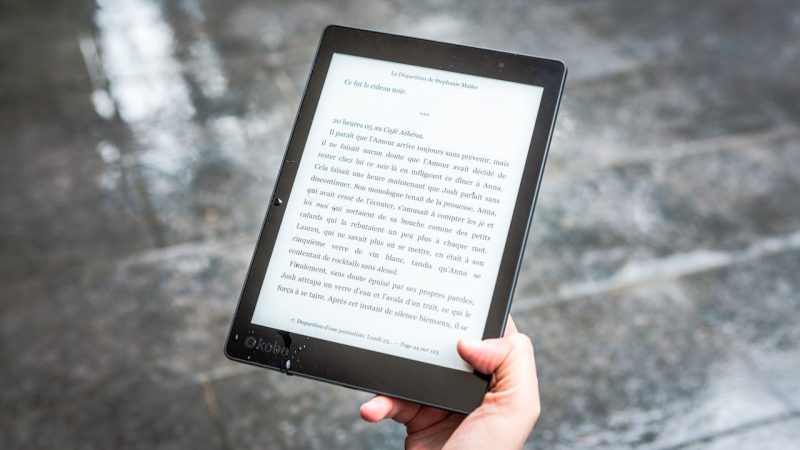Exploring the Key Differences Between APA, MLA, Chicago, and IEEE Citation Styles

In the realm of academic writing, the choice of citation style plays a pivotal role in shaping the credibility and professionalism of a research paper. Among the plethora of citation styles available, APA, MLA, Chicago, and IEEE stand out as prominent frameworks, each with its own set of rules and conventions. Understanding the nuances and disparities between these citation styles is essential for researchers, students, and writers seeking to adhere to scholarly standards and effectively communicate their sources. This blog article delves into the distinctive characteristics of APA, MLA, Chicago, and IEEE citation styles, shedding light on their unique formatting requirements and usage guidelines. By exploring the differences between these citation styles, readers will gain valuable insights into selecting the most suitable style for their academic endeavors and enhancing the clarity and accuracy of their citations.
1. APA (American Psychological Association) Citation Style
The American Psychological Association (APA) citation style is widely used in social sciences and education. It is characterized by in-text citations that include the author’s last name and publication year, followed by a reference list that provides complete bibliographic details.
In-Text Citations
APA in-text citations are designed to be concise and unobtrusive, allowing readers to easily locate the corresponding reference in the reference list. The format for in-text citations is as follows:
- For a single author: (Smith, 2020)
- For multiple authors: (Smith & Johnson, 2020)
- For no author: (2020)
- For indirect citations: (Smith, as cited in Johnson, 2020)
Reference List
The APA reference list is organized alphabetically by author’s last name and includes the following elements:
- Author’s last name, first initial
- Publication year
- Title of the work in sentence case
- Publication information (publisher, publication date, etc.)
- DOI or URL (if applicable)
Here’s an example of an APA reference list entry:
Smith, J. (2020). The impact of social media on mental health. Journal of Psychology, 10(1), 1-10. doi: 10.1037/jop0000123
Key Features
- APA is commonly used in fields such as psychology, education, and social sciences
- It emphasizes the importance of providing complete bibliographic details in the reference list
- APA in-text citations are designed to be concise and unobtrusive, allowing readers to easily locate the corresponding reference
By understanding the APA citation style, researchers and writers can effectively communicate their sources and maintain academic integrity in their work.
2. MLA (Modern Language Association) Citation Style
The Modern Language Association (MLA) citation style is predominantly used in humanities and liberal arts disciplines. It employs in-text citations that include the author’s last name and page number, followed by a Works Cited page that provides full bibliographic information for each source cited.
In-Text Citations
MLA in-text citations are designed to be brief and to the point, allowing readers to easily identify the source of the information. The format for in-text citations is as follows:
- For a single author: (Smith 25)
- For multiple authors: (Smith and Johnson 42)
- For no author: (“Title of Article” 10)
- For indirect citations: (qtd. in Smith 30)
Works Cited Page
The MLA Works Cited page is organized alphabetically by the author’s last name or the title of the source if no author is provided. Each entry includes the following elements:
- Author’s last name, first name
- Title of the work in title case
- Title of the container (journal, book, website, etc.)
- Publication information (publisher, publication date, etc.)
- Page numbers
- URL (if applicable)
Here’s an example of an MLA Works Cited entry:
Smith, John. “The Role of Literature in Society.” Journal of Humanities, vol. 5, no. 2, 2020, pp. 30-45.
Key Features
- MLA is commonly used in disciplines such as literature, languages, and cultural studies
- It emphasizes the inclusion of page numbers in in-text citations for direct quotations
- The Works Cited page provides detailed bibliographic information for each source cited in the paper
By mastering the MLA citation style, writers in humanities and liberal arts fields can effectively acknowledge their sources and adhere to the conventions of scholarly writing.
3. Chicago/Turabian Citation Style
The Chicago/Turabian citation style is widely utilized in history, arts, and social sciences disciplines. It distinguishes itself by employing footnotes or endnotes for citations within the text, along with a bibliography that provides comprehensive details for each source referenced.
Footnotes/Endnotes
Chicago/Turabian uses footnotes or endnotes to acknowledge sources within the text. The format for footnotes/endnotes includes a superscript numeral that corresponds to a note at the bottom of the page or at the end of the document.
Example: The impact of art on society has been widely debated.²
²John Smith, Art and Society (Chicago: University of Chicago Press, 2020), 25.
Bibliography
The Chicago/Turabian bibliography is organized alphabetically by the author’s last name or the title of the work. Each entry in the bibliography includes the following elements:
- Author’s name
- Title of the work in title case
- Publication information (publisher, publication date, etc.)
- Page numbers
- URL (if applicable)
Here’s an example of a Chicago/Turabian bibliography entry:
Smith, John. Art and Society. Chicago: University of Chicago Press, 2020.
Key Features
- Chicago/Turabian is commonly used in history, arts, and social sciences disciplines
- It utilizes footnotes or endnotes to cite sources within the text
- The bibliography provides detailed information for each source cited in the paper
By understanding the Chicago/Turabian citation style, researchers and writers in these disciplines can effectively acknowledge their sources and maintain the scholarly integrity of their work.
4. IEEE (Institute of Electrical and Electronics Engineers) Citation Style
The Institute of Electrical and Electronics Engineers (IEEE) citation style is predominantly used in technical fields such as engineering and computer science. It distinguishes itself by employing numeric in-text citations within square brackets, along with a numbered reference list that provides essential details for each source cited.
In-Text Citations
IEEE in-text citations are designed to be concise and numerical, allowing readers to easily locate the corresponding source in the reference list. The format for in-text citations is as follows:
- For a single source: [2]
- For multiple sources: [2,10]
- For a range of sources: [2-5]
Reference List
The IEEE reference list is organized numerically based on the order of appearance in the text. Each entry in the reference list includes the following elements:
- Author(s) name(s)
- Title of the work in title case
- Source information (journal, conference proceedings, etc.)
- Publication information (publisher, publication date, etc.)
- DOI or URL (if applicable)
Here’s an example of an IEEE reference list entry:
[2] J. Smith, “Advancements in Robotics,” IEEE Transactions on Robotics, vol. 10, no. 2, pp. 50-65, 2020.
Key Features
- IEEE is commonly used in technical fields like engineering and computer science
- It employs numeric in-text citations within square brackets for referencing sources
- The reference list is organized numerically based on the order of appearance in the text
By mastering the IEEE citation style, researchers and writers in technical disciplines can effectively cite their sources and adhere to the conventions of scholarly writing in their field.
5. Recommendations for Choosing and Using Citation Styles
Selecting the appropriate citation style for your academic writing is crucial for maintaining consistency, credibility, and adherence to disciplinary norms. Here are some recommendations for choosing and using citation styles effectively:
1. Understand Your Field:
- Consider the conventions and preferences of your academic discipline when selecting a citation style.
- Different fields may have specific requirements or preferred styles that align with their scholarly practices.
2. Consult Style Guides:
- Refer to official style guides or manuals for detailed instructions on formatting citations in a specific style.
- Familiarize yourself with the rules and guidelines to ensure accurate and consistent citation practices.
3. Use Citation Management Tools:
- Explore citation management tools like Zotero, EndNote, or Mendeley to organize and generate citations in various styles.
- These tools can streamline the citation process and help you manage your references efficiently.
4. Be Consistent:
- Maintain consistency in your chosen citation style throughout your document or research paper.
- Ensure that in-text citations, reference lists, and formatting adhere to the guidelines of the selected style.
5. Proofread and Double-Check:
- Review your citations carefully to avoid errors or inaccuracies in formatting.
- Double-check the accuracy of author names, publication dates, titles, and other citation details.
6. Seek Feedback:
- Request feedback from peers, instructors, or academic advisors on your citation practices.
- Incorporate suggestions for improvement to enhance the clarity and professionalism of your citations.
7. Stay Updated:
- Stay informed about any updates or revisions to citation style guidelines.
- Regularly check for new editions or revisions to ensure that your citations align with the most current standards.
By following these recommendations, you can effectively navigate the complexities of citation styles, enhance the quality of your academic writing, and demonstrate a commitment to scholarly integrity and professionalism.
Conclusion
Navigating the intricacies of citation styles such as APA, MLA, Chicago, and IEEE is essential for researchers, students, and writers seeking to uphold academic integrity and communicate their sources effectively. Each citation style offers unique formatting conventions and guidelines tailored to specific disciplines, reflecting the diverse needs and practices of scholarly communities.
By understanding the distinctions between these citation styles and following best practices for selecting and using them, individuals can enhance the clarity, consistency, and professionalism of their academic writing. Choosing the appropriate citation style based on the requirements of your field, consulting style guides, utilizing citation management tools, and maintaining consistency in formatting are key strategies for mastering citation practices.
As you embark on your academic journey, remember to seek feedback, stay updated on style guidelines, and prioritize accuracy and precision in your citations. By incorporating these recommendations into your writing process, you can navigate the complexities of citation styles with confidence, ensuring that your work reflects a commitment to scholarly excellence and adherence to disciplinary standards.
Embrace the nuances of citation styles as tools for effective communication, acknowledgment of sources, and the advancement of knowledge in your respective fields. Let your citations serve as a testament to your dedication to academic rigor and the pursuit of intellectual inquiry.





